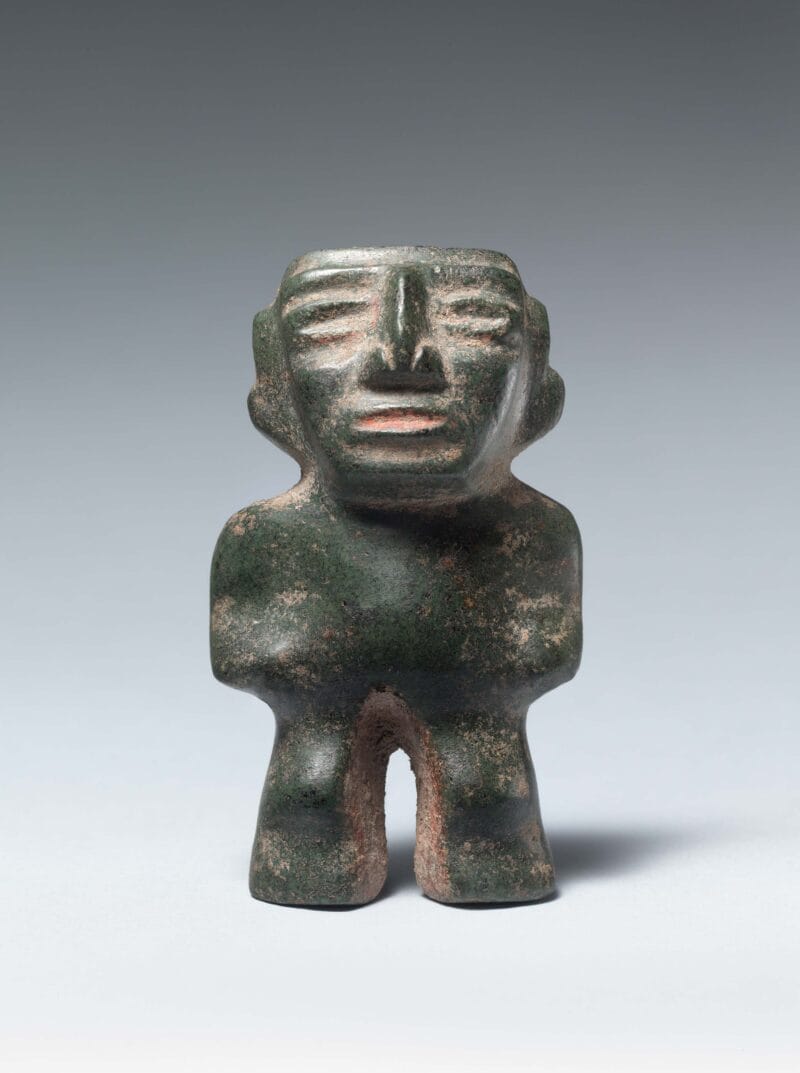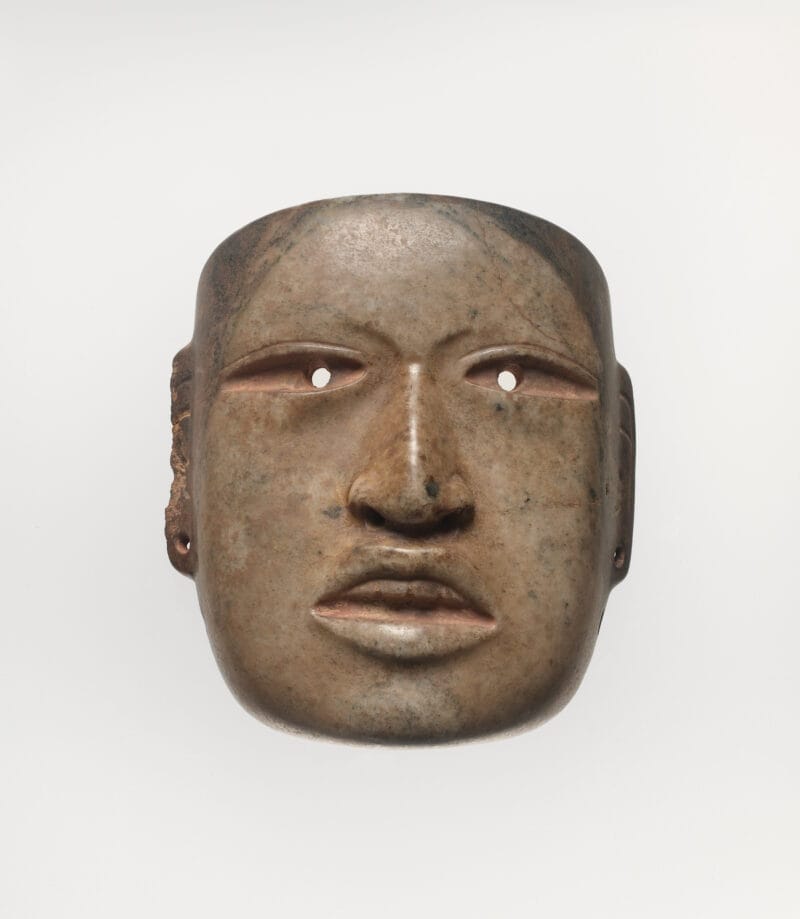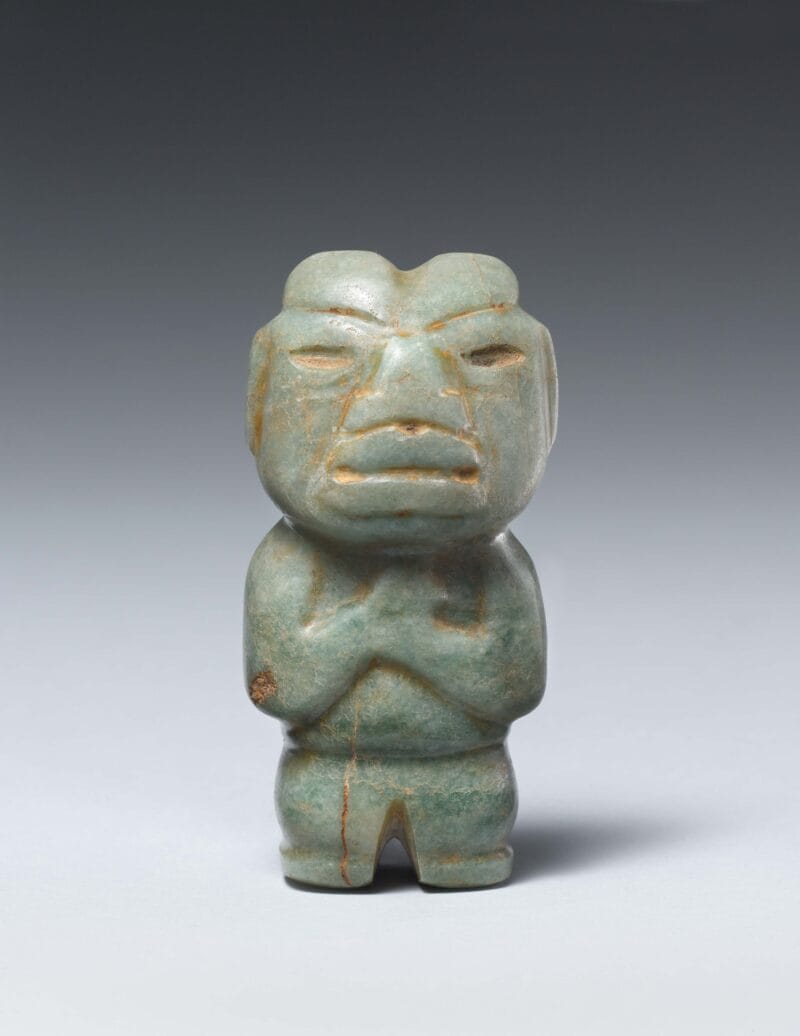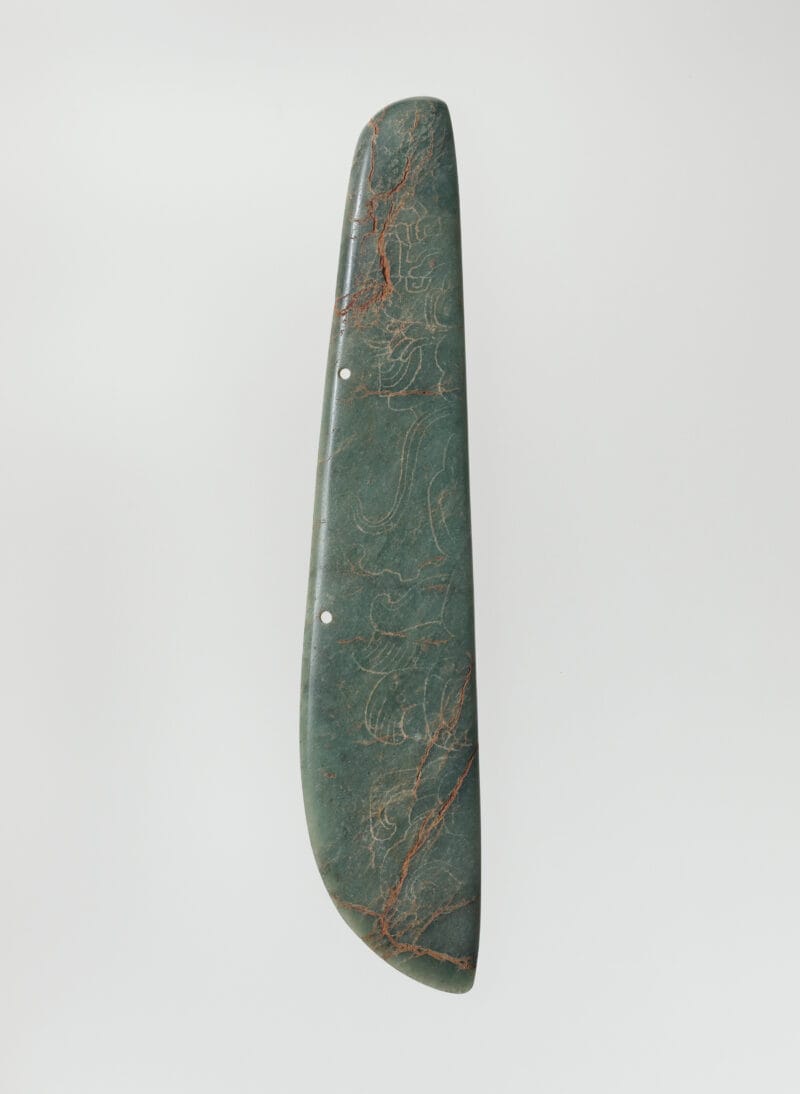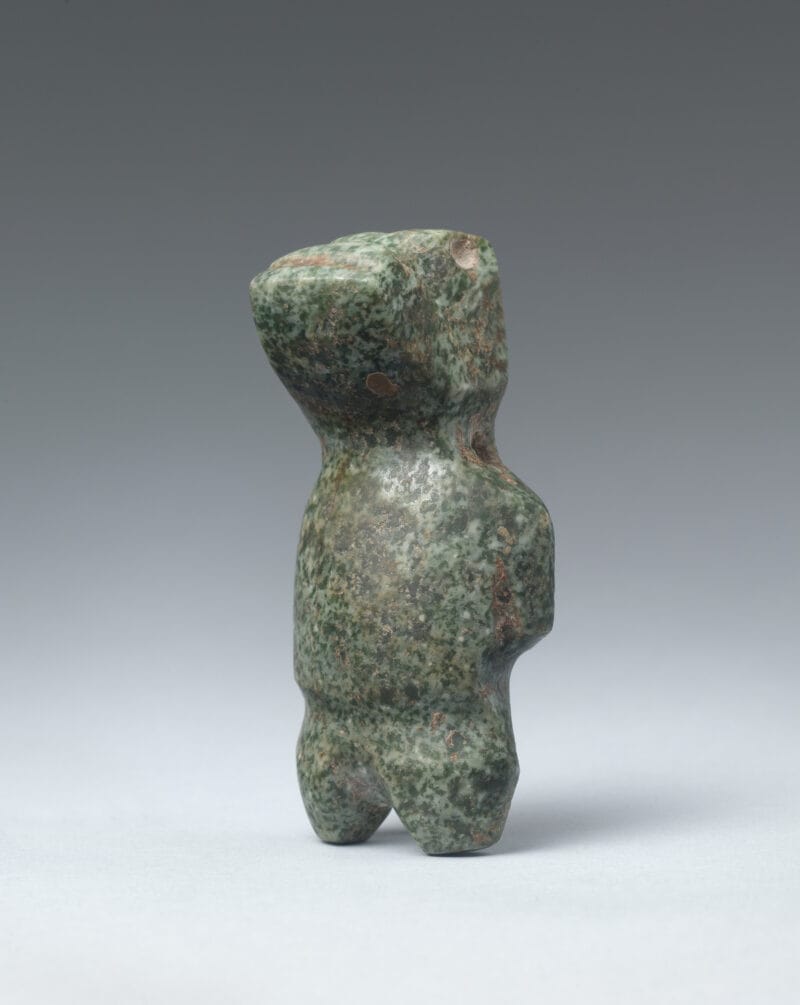
About the Object
This incised plaque was likely made of green jade and probably recycled from an earlier disinterred Olmec celt, or hand axe. Scholars have found that this was a common practice among the Maya and other Mesoamerican societies. This work has a line depiction of a human figure that represents either a dignitary or a god. Highly conventionalized and naturalistic, classic Mayan imagery usually conveys emotionally charged common people or prisoners as counterexamples to expressionless royalty and warriors. Inexpressive faces were meant to show social behavior and self-restraint, which were qualities highly prized by the Mayan elite. The impassive facial expression of the figure depicted in this example suggests the elevated social status of the elites who commissioned this piece.
Additional Information
The ancient Maya occupied the southern part of Mexico and some areas of northern Central America from approximately 4,000 years ago to about 1520 CE, and there remain sizable Mayan communities in Mexico today. Prior to their conquest by the Spanish, the Mayan tradition developed complex language and mathematical systems, urban architecture, and rich socioreligious structures, all made possible by expert agricultural and warring activities. The Maya also achieved advanced levels in ceramic and stone-working techniques portraying deities, humans, and animals with remarkable naturalistic expression. Additionally, the complex net of Mayan iconography found in ceramic and stone depictions reveals how influential the earlier Olmec tradition became to the Maya. The Olmec tradition developed in the western part of the main Mayan dominion area, likely impacting the Maya between 1200 BCE and 300 BCE.
The depiction in this celt may also represent Mayan rain god Chaac. This is likely linked to the Izapa tradition, which was present in what became the Mayan Intermediate Zone and Highlands during the late Preclassic period. This Izapan iconography, highly influenced by the Olmec, became the foundation of Mayan iconography. Chaac’s depiction in this plaque resembles older representations of the long-lipped god, which in Olmec iconography is connected with the were-tiger/jaguar, god of rain and lightning. Intriguingly, depictions of the long-lipped god in Izapan art are usually found in stelae, which were likely connected with notions of rulership.
Wally Zollerman Collection, 1980s;
[Sotheby’s, New York, May 19, 2001, lot 524];
[Throckmorton Fine Art, New York, NY];
The Jan T. and Marica Vilcek Collection, 2007-2010;
Gift to The Vilcek Foundation, 2010;
Sotheby’s, New York, Arts of Africa, Oceania and the Americas, May 19, 2001, lot 524.
Related Objects
You may also be interested in
Nari Ward: Home of the Brave

Nari Ward: Home of the Brave

Nari Ward



